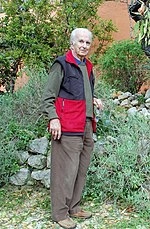How to Pronounce John Jacob Lavranos
#50
Most Popular
Boost
Mar 29, 1926 Corfu, Ionian Islands Region, Greece Died on 01 Feb 2018 (aged 91)
South African botanist (born 1926)
AriesJohn Jacob Lavranos, Date of Birth, Place of Birth, Family, Facts, Age, Net Worth, Biography and More in FamedBorn.com

South African botanist (born 1926)
Aries